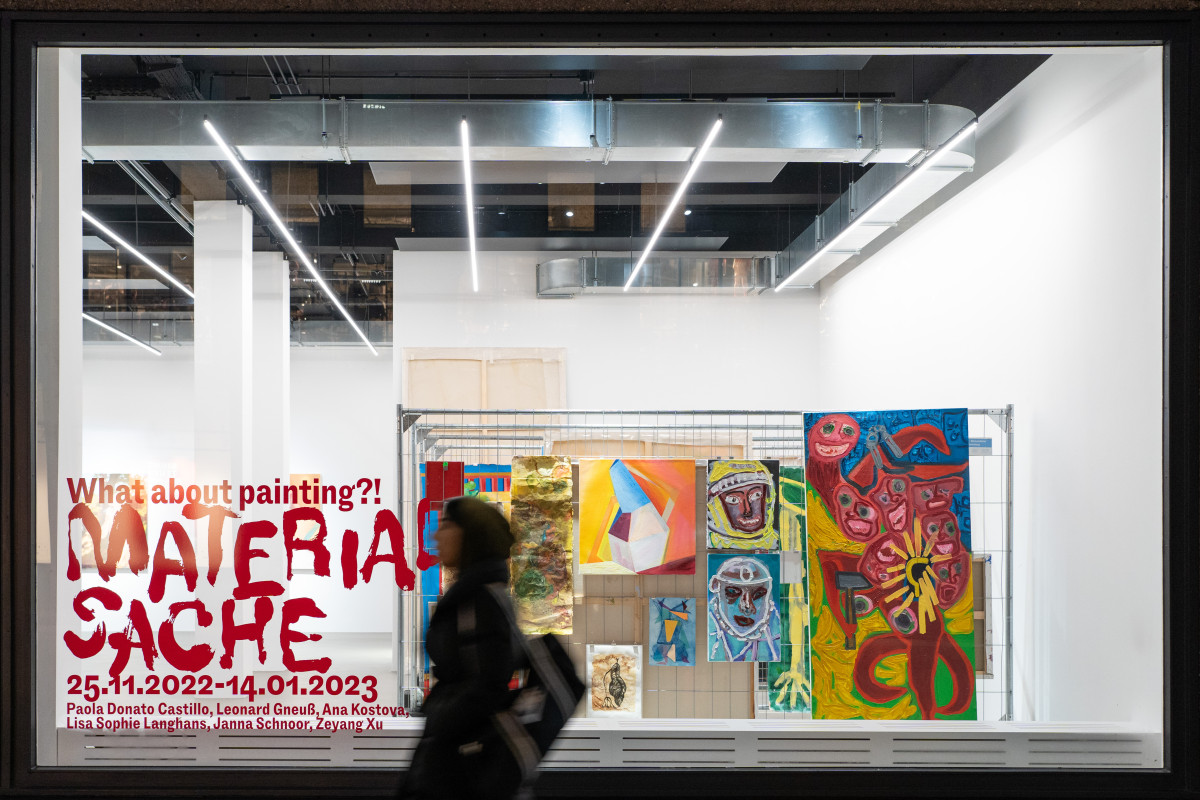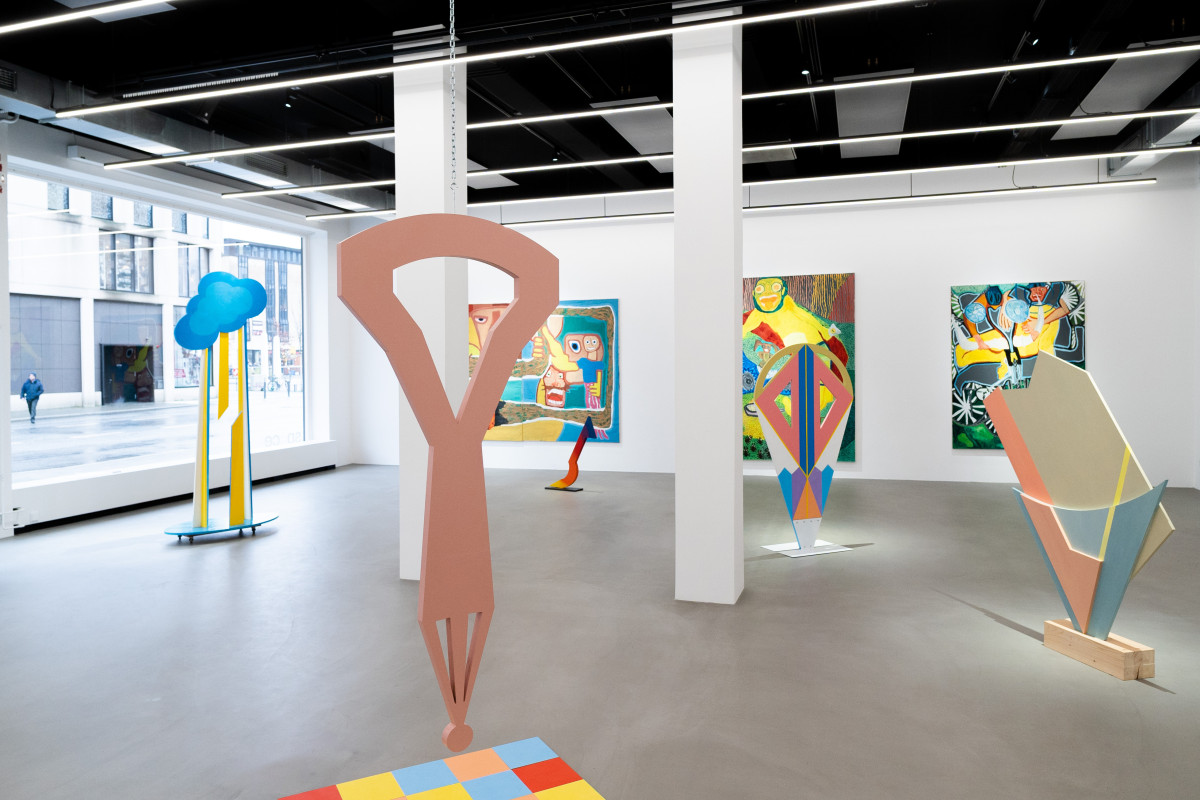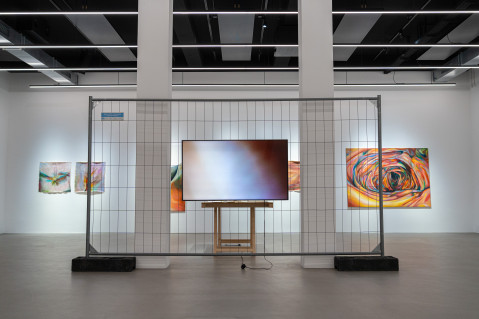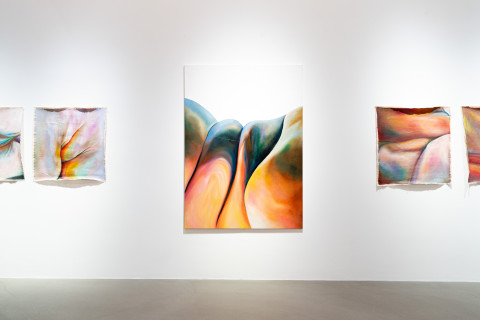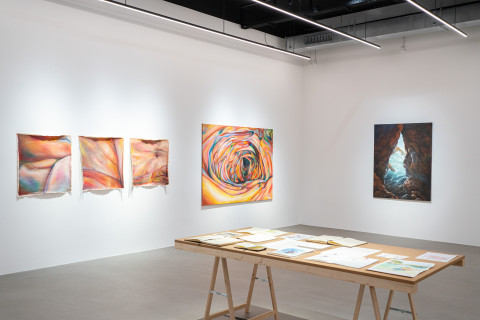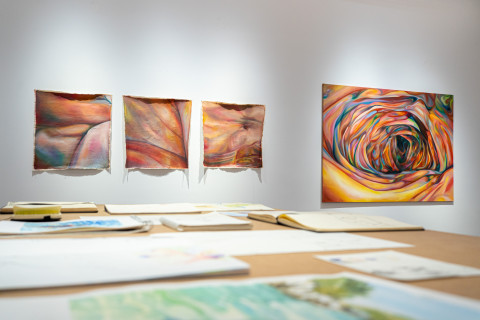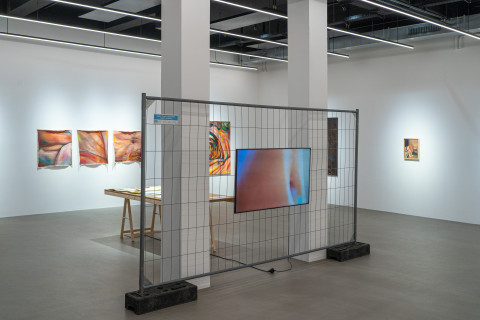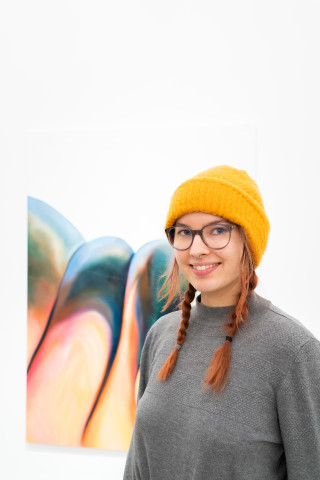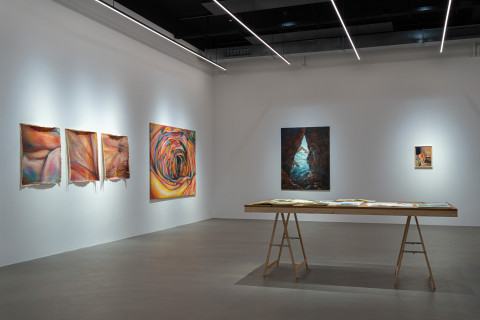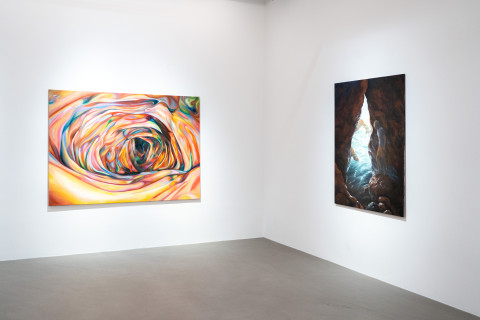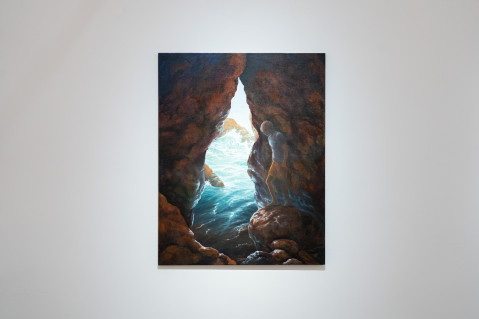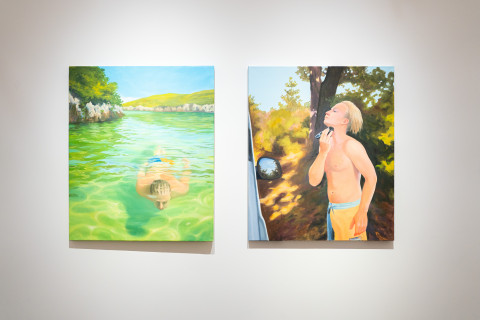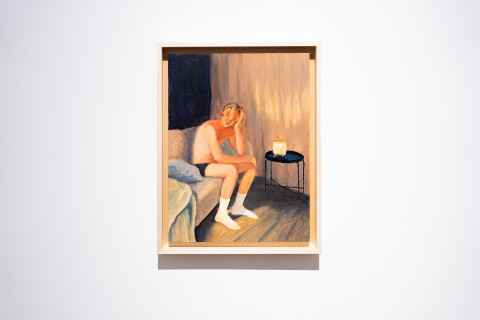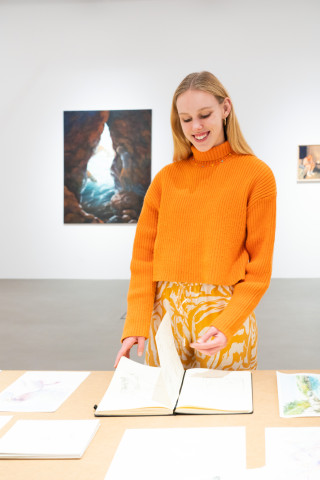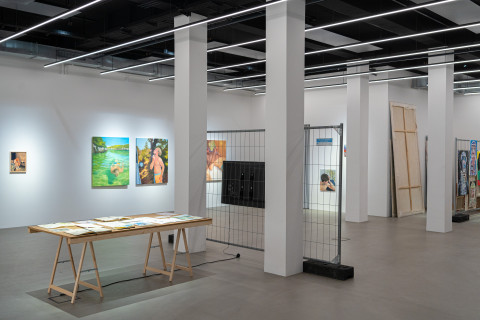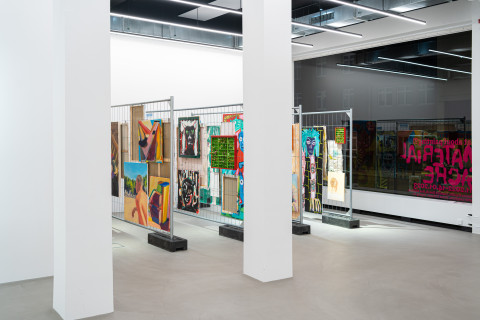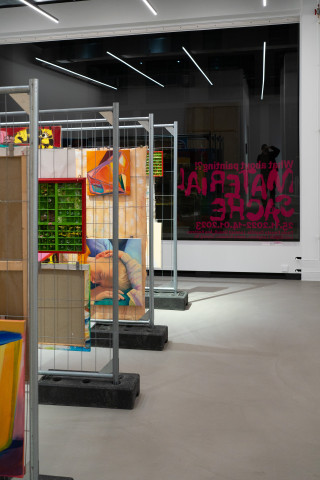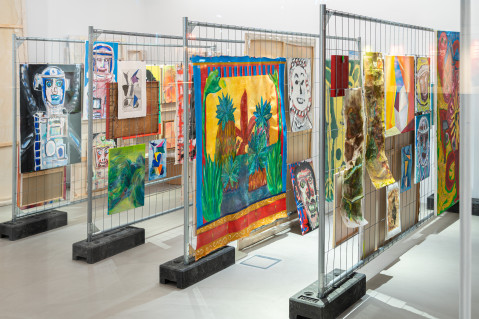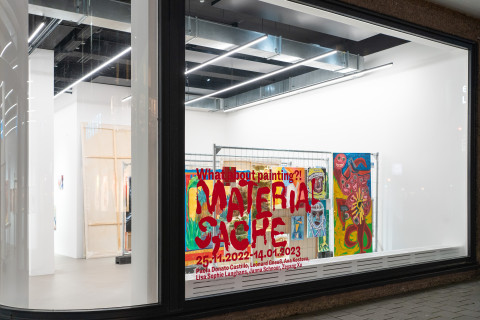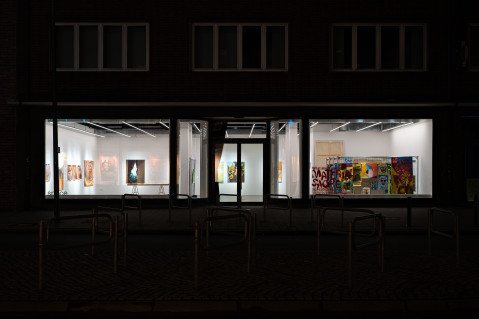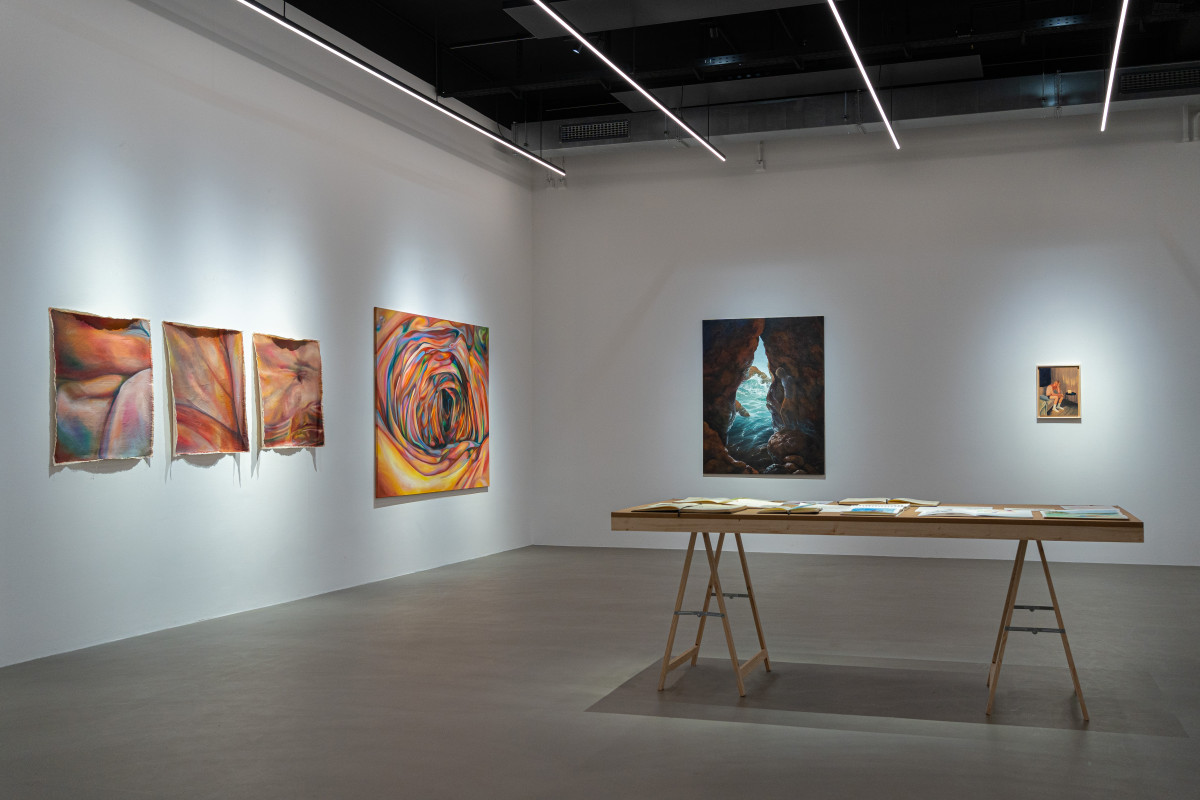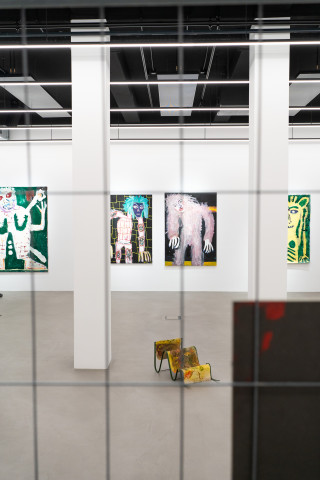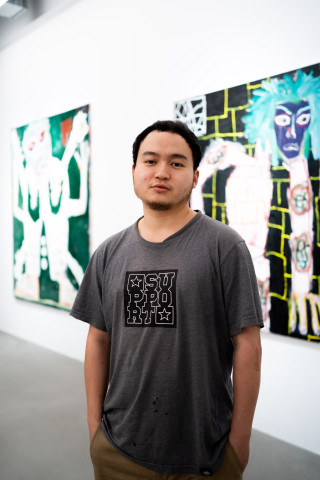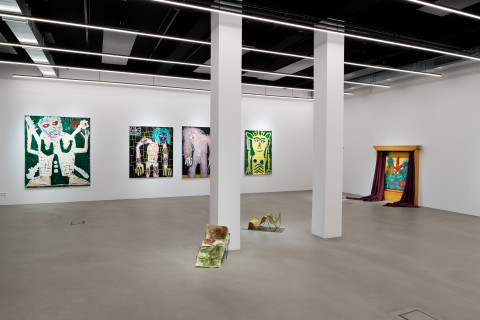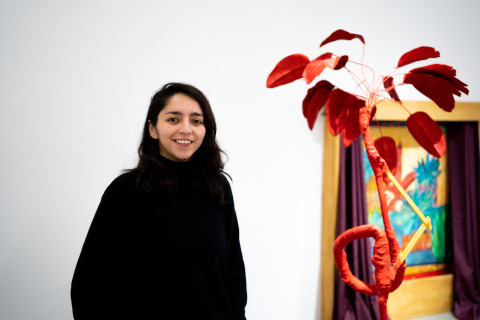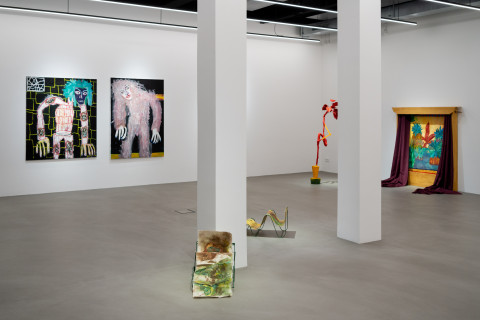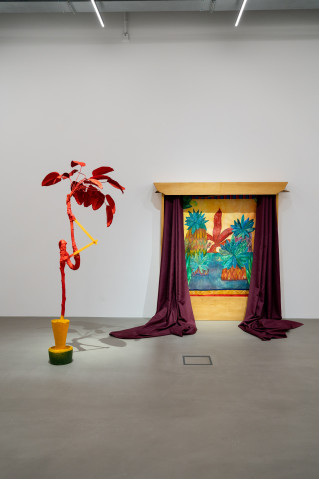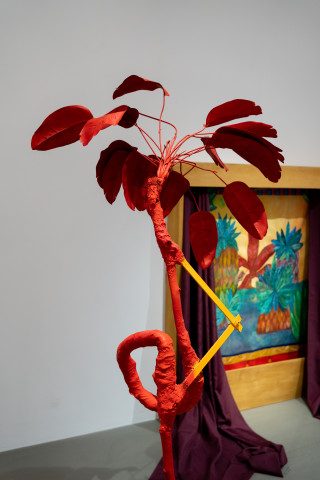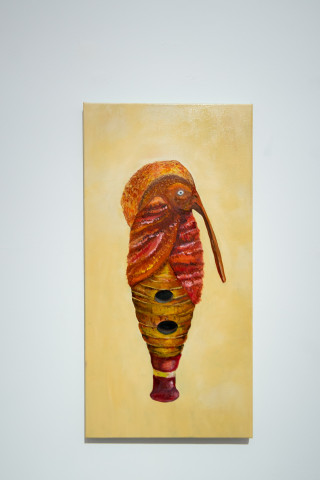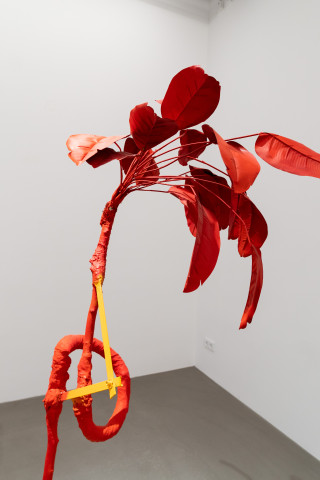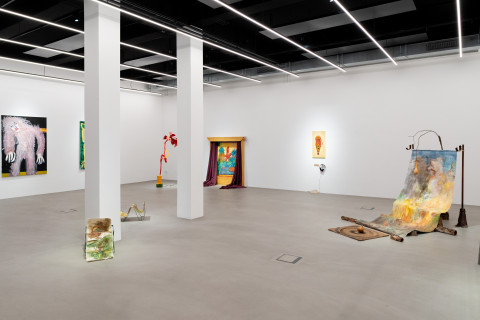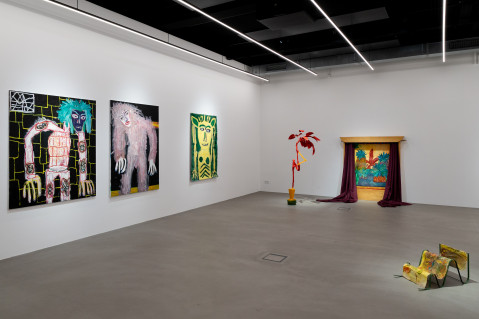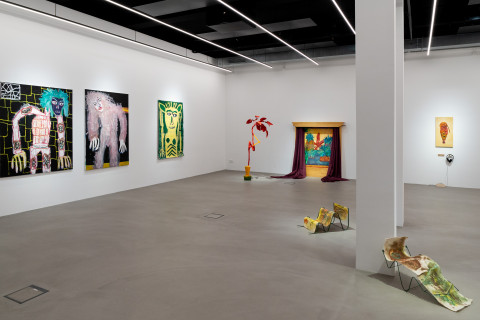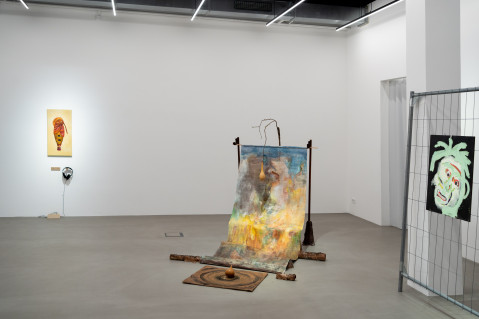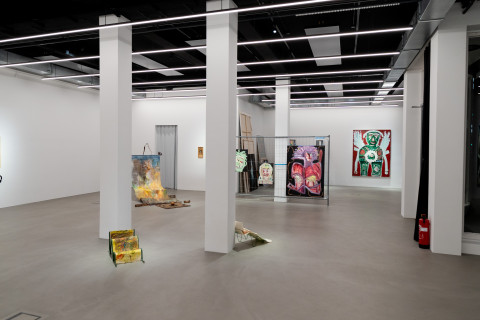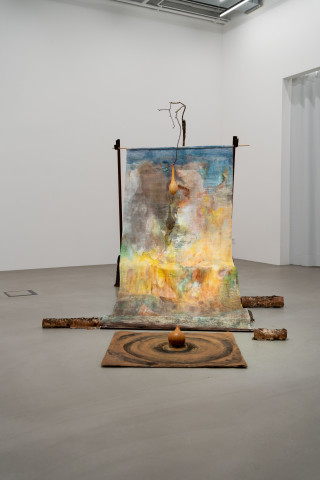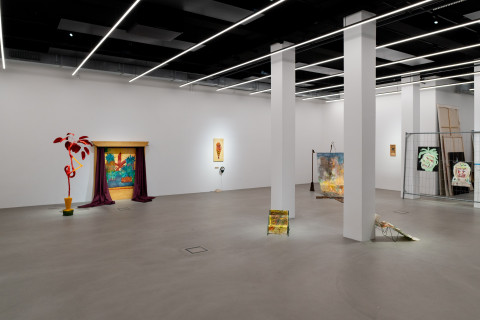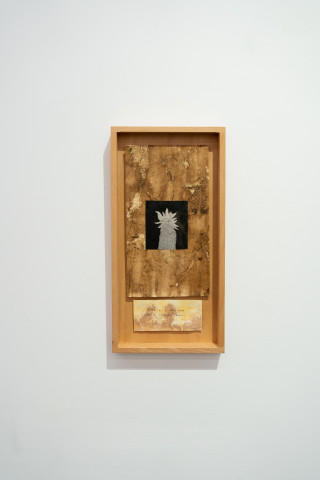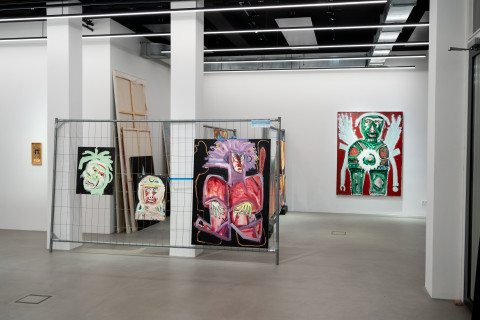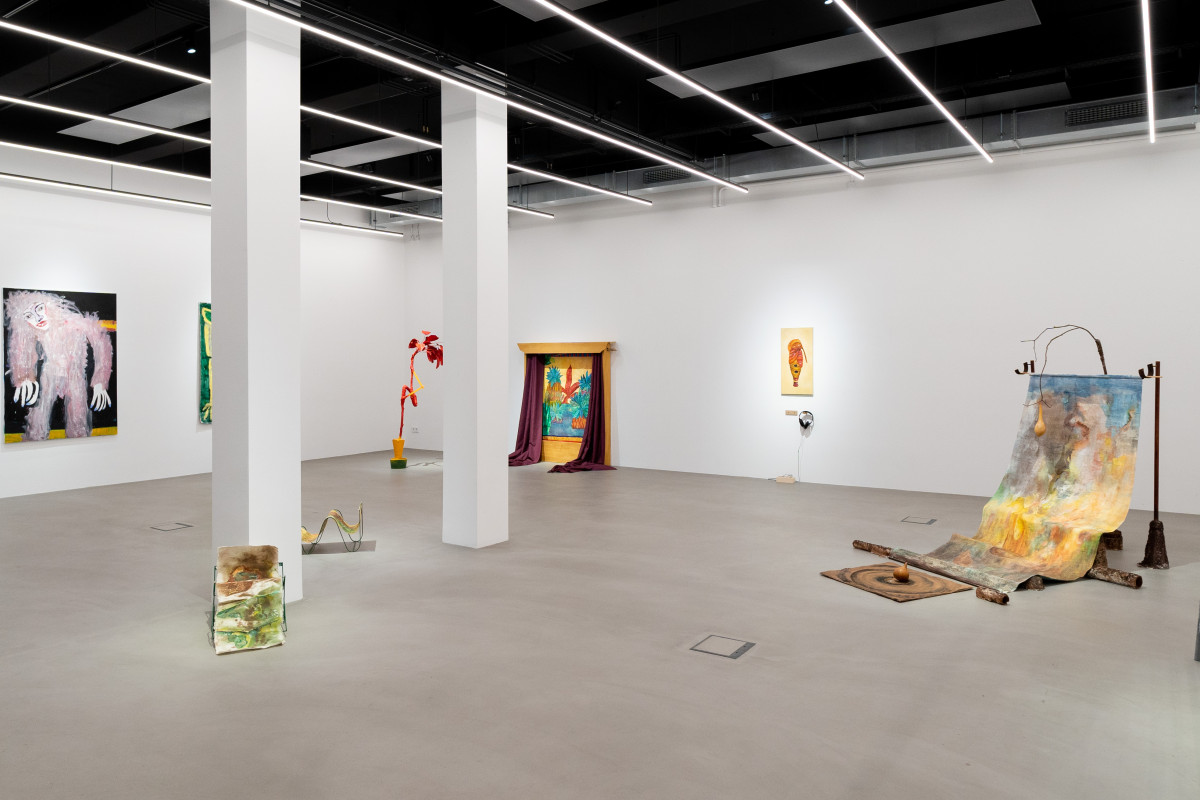A Matter of Material – What about painting?!
24With Materialsache – What about painting?! spce dedicates itself to painting in three acts, in which two artists exhibit in dialogue with each other, as well as addressing the question: What can painting be today? For the entire duration of the exhibition, a transparent, walk-in warehouse with works by all participating artists will emphasise the juxtaposition of different approaches, with the understanding that the technique of painting is multifaceted, multi-layered and cannot necessarily be reduced to paintings.
With its annual programmatic theme Materialsache, spce focuses on the choice of medium and the process of form-finding with the artistic means and techniques chosen. In a series of exhibitions and events, the question of the meaning and choice of source material is explored in terms of artistic and conceptual content.
In the process, the extent to which conceptualisations and media-technical attributions are useful and applicable to contemporary art production is questioned; what quality does a media-specific approach hold? When is it a support, when is it a burden?
How is this reflected in the much-cited current focus on artistic research and the artist as a seismograph of social and political imbalances?
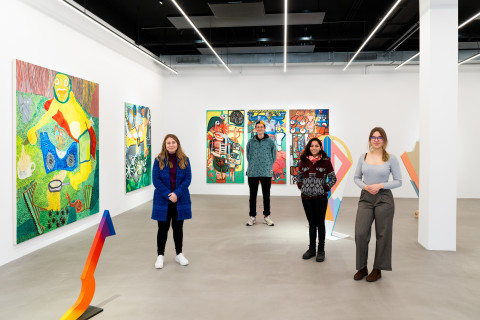
Group photo of the exhibiting artists
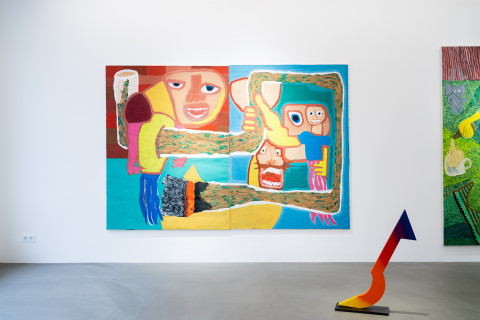
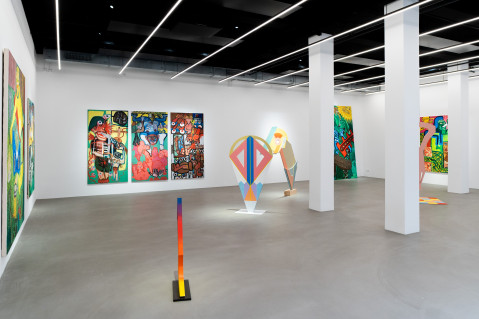
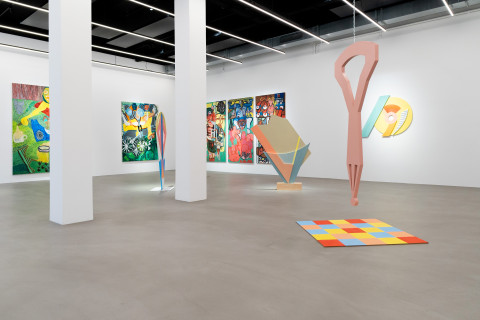
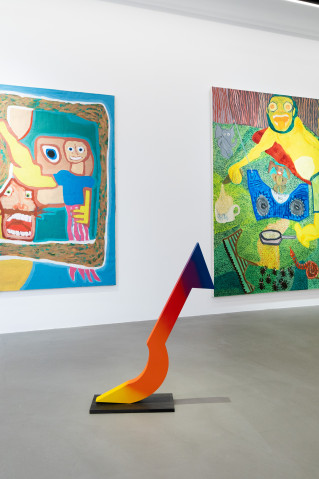
Before the Last Moment - Ana Kostova
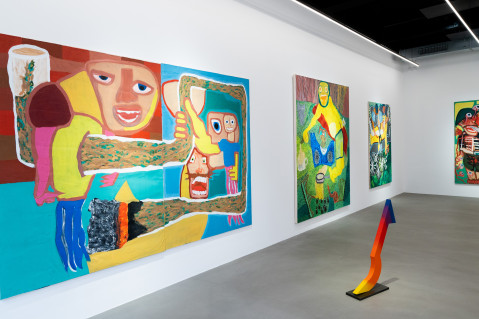
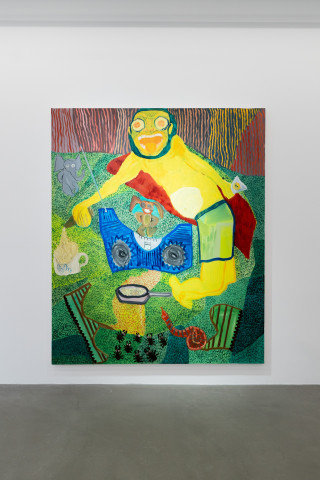
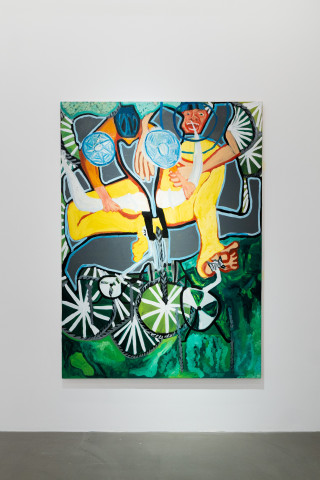
Leonard Gneuss - Franz and Filip on the anti-fascist bicycle
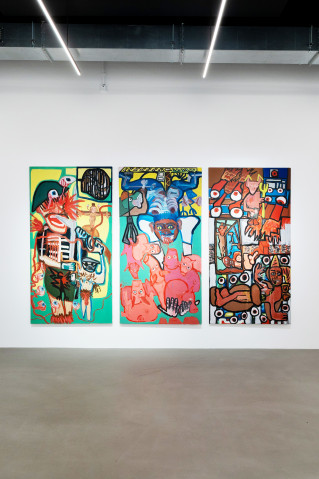
"Peng voll in die Fresse", "Die süßen Schweinis", "Opiumhölle" - Triptych by Leonard Gneuss
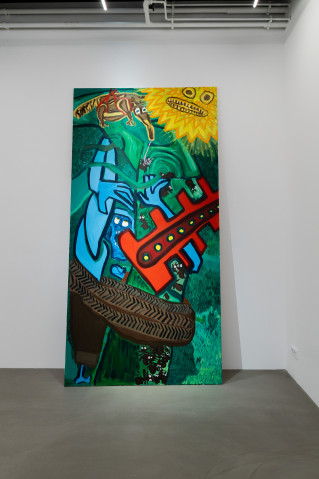
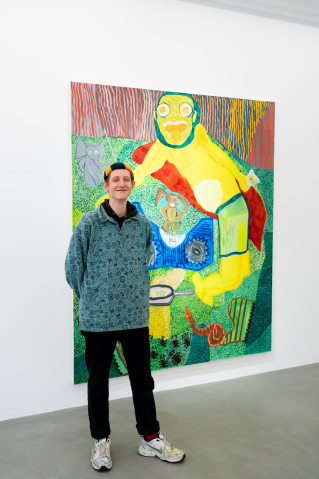
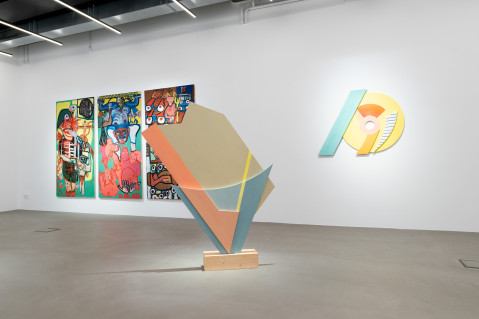
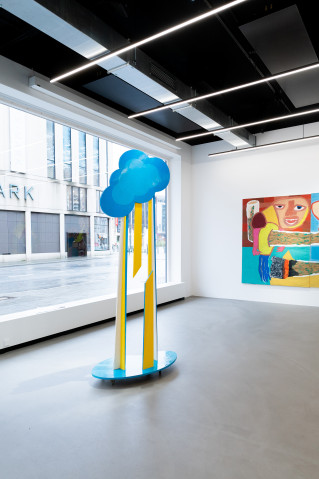
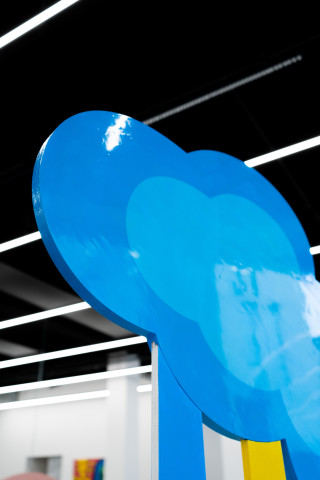
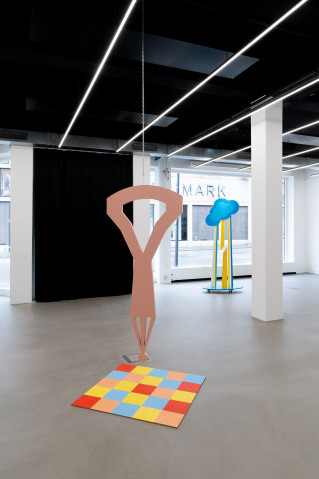
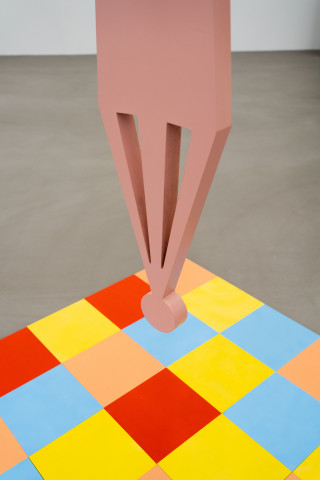
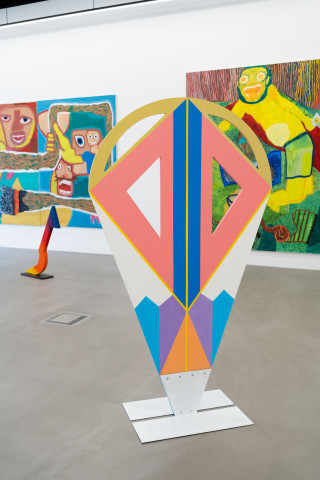
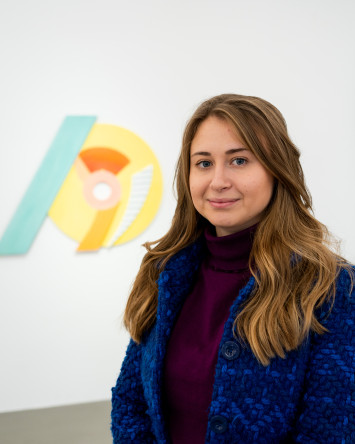
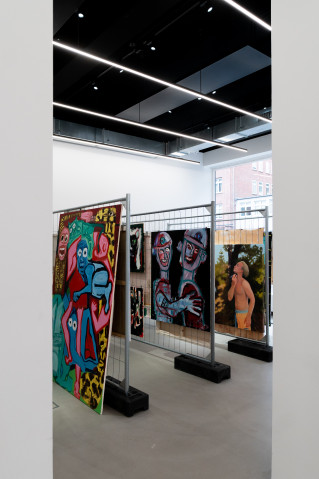
In the first act of “Materialsache – What about painting?!”, Ana Kostova and Leonard Gneuss enter into a dialogue, representing two artistic positions that – despite the fact that both study painting under Professor Antje Majewski and share a studio at the university – take very different paths in relation to their medium.
In his often large-format paintings, Leonard Gneuss' (*1998, Germany) works captivate with their strong colours, which he quite deliberately contrasts with one another. What is striking is the radical original use, the emphasis on the plane and the two-dimensionality of the canvas, in stark contrast to the idea of imitating reality by drawing proportions or spatial depths. That's not what his painting is about. Rather, it enables him to create pictorial worlds that are allowed to elude visual logic and stringent narratives.
With figurative elements and vivid titles such as Giraffe and Giraffe Lovers Dancing at a Party, The Chainsaw Massacre in the Treetops or Franz and Filip on the Anti-Fascist Bicycle, he playfully builds loose chains of associations that allow for open-ended readings.
Ana Kostova (*1995, BUL) defines herself as a painter through geometric colour schemes and does not limit herself to the traditional painting surface of the canvas, but formulates it sculpturally. Once graphic elements become three-dimensional, colours become figures that are characterised by a body, as can be seen in the works The Queen (2022) or Mycloud (2022). She describes these bodies as a “continuation of her painting.”
Kostova blurs the boundaries between painting and sculpture; or one could define her works differently as sculptures that take possession of the space out of a painterly gesture and take hold of space as actors in their own right.
The second act is dedicated to the genre of portraiture in the broadest sense and is characterised by the closeness of both positions in the choice of their subject – the reproduction of the human body – whereby both the painting style and the process leading up to the creation of the picture reveal diametrically opposed concepts of intimacy.
Lisa Sophie Langhans (*2001, Germany) is studying in Professor Almut Linde's interdisciplinary practice class, which may come as a surprise, since her artistic work can be clearly assigned to the practice of painting. What is interesting here, when delving into her work, is the methodology of pictorial invention.
The starting point of the serial works Skins (2021) and Skinny (2022) is the study of one's own body, which is examined and scanned in close-up using a video camera. The resulting images, often characterised by a certain blurriness, are then transferred to the canvas, where they once again occupy a space of their own, becoming abstractions that dissolve the body and its identity and make them disappear.
The conscious decision to dispense with the stretcher frame and instead leave the paintings on bare cotton fabric exhibits the materiality of the canvas in a haptic component. It allows associations with scraps of skin and emphasises the tension between absolute closeness and clinical distance.
Janna Schnoor (*2000, Germany) studies painting under Professor Antje Majewski. Her paintings are based on precise observations of everyday moments and are roughly connected to the painterly tradition of striving to imitate reality. The path to the pictorial motif is classically via sketches, drawings and studies, whereby pictorial elements are taken from various experienced situations and composed into an unprecedented whole (Hideaway, 2022).
In paintings such as Ausgewöhnen (2021), Morgenbad (2022) and Von mir zu dir (2021), human relationships, touch and physicality are sensually addressed. The partner as an object of desire and interest is brought into view and transferred to the canvas; the viewer becomes a witness to intimate moments. A common visual language of art history – the female body exposed to the male gaze – is ironically counteracted here.
The third and final act brings together Paola Donato Castillo and Zeyang Xu, two artists who are very experimental and broad in their artistic themes. For both, their art creates a tool to actively approach questions, to explore them using the means of art, to break them open. By concentrating on details, they each build ways for themselves (and others) to navigate through a global world that appears increasingly complex due to the media information overload.
Paola Donato Castillo (*1993, COL) studies at the Muthesius Kunsthochschule in the painting class of Professor Antje Majewski and has an interdisciplinary scientific approach that is not limited to one medium. In her projects, she works multi-medially with painting, drawing, film, animation, sound and sculpture and weaves the individual elements into multi-sensory installations that can be sensually experienced.
She describes herself as an "explorer of natural processes", her artistic practice as an approach to biological mechanisms – as in her Diaspora project, in which she intensively explores the wealth of strategies plants use to disperse their seeds, transferring these to her own diaspora experience.
In the multimedia installation transplanta (2022), she combines a painting staged behind a window curtain as if on a stage, a sculpture of a fictitious plant, and a sound work to create an exotic landscape. As so often in her work, it is a metaphor, science fiction.
Zeyang Xu (*1993, CHN) is studying graphics under Professor Piotr Nathan. There is something manic and driven about his way of working. As soon as he has discovered a topic for himself – be it the experience of a Japanese Nabuki theatre or a visit to the large-scale exhibition Space Programs: Rare Earths by Tom Sachs in the Deichtorhallen – he works through it in a series of paintings in an attempt to approach the essence of a thing.
He experiments with different painting techniques, materials, picture sizes, supports, sometimes to the point of wearing out the material. Painting serves him neither as a moment of contemplation nor of imitation, but as a stream of consciousness that absorbs personal impressions and externalises them through the canvas.
